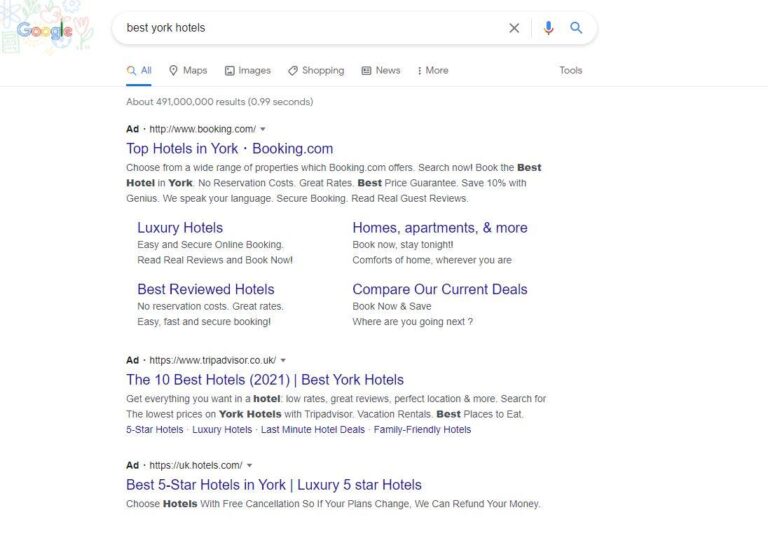In July 2022, advertisers using Google Ads will no longer be able to create Expanded Text Ads (or ETAs for short) or edit any existing expanded text ads. The only search ad type that will be able to be used going forwards is the responsive search ad.
Google has said that any existing expanded text ads will continue to be searched alongside Responsive search ads. However, all you will be able to do with expanded text ads is pause, resume or remove them from any campaigns. Call ads and Dynamic Search Ads can still be created and edited.

The responsive search ads test different combinations of ad copy and learn which perform best – combining different headlines and descriptions entered by the advertiser. Responsive ads launched back in 2018, and have been the default since February 2021. Clearly Google is confident to make it the only type going forwards.
In the announcement, Google said:
Starting June 30, 2022, responsive search ads will be the only Search ad type that can be created or edited in standard Search campaigns. This change will help simplify the way you create Search ads and make it easier for you to drive performance with our automated tools.
https://support.google.com/google-ads/answer/11031467
Why is Google Ads dropping Expanded Text Ads?
Google is essentially dropping expanded text ads in order to serve more relevant ads. Or at least, that’s the theory. Google had said that advertisers switching to responsive from expanded ads with the same assets gain 7% conversions at a similar cost per conversion. So in theory, it gains better results while making life easier for advertisers creating Google Search ads. Google stated:
15% of search queries every day are new searches we’ve never seen before. As consumer trends shift and evolve, it’s more important than ever to make it easier for people to connect with your business through relevant and helpful ads.
https://support.google.com/google-ads/answer/11031467
This is Google pushing automation within the advertising space. Using machine learning, Google can show the most relevant ads to as many people as possible, while utilising the creative output of advertisers. Responsive search ads allow you to compete in a variety of auctions, as the ads shown are adapted to show a relevant message for that specific query.
Google had this example to give:
As Joey Wang, Digital Marketing Manager at Standard Chartered Bank shared, “Responsive search ads really help us drive incremental conversions for our credit cards and solve the challenge of creating the best-performing ads.” The brand rolled out responsive search ads to nearly 100% of its credit card ad groups by using headlines and descriptions from its expanded text ads. By pairing responsive search ads with Smart Bidding, Standard Chartered Bank saw conversions increase by 156% in its branded campaigns and by 84% in generic campaigns.
https://support.google.com/google-ads/answer/11031467
What next?
While responsive search ads take some of the headaches out of creating the perfect ad, as Google uses its big machine learning brain to do some of the legwork, it is also a concern for advertisers who currently see better performance from curated, Expanded Text Ads rather than Google’s Responsive Search Ad variation.
However, any businesses which are in regulated fields will have to be careful on how ads appear. While Google is very clever these days, there will be some examples where Google simply cannot be smart enough to meet regulatory rules.
Nonetheless, it will be important to ensure all ad campaigns and ad groups have Responsive Search Ads set up and running before the deadline. But before that, it is best to start now and get your Responsive Search Ads up to speed so that once everyone is forced down the responsive funnel, you will already have a headstart.
How do you create effective responsive search ads?
- Audit the account for high-performing copy and content from existing expanded text ads to improve responsive ads
- Pin relevant headlines/descriptions to your ads, so they appear in the place you want them to
- Ensure you have ad variations set up to test barious assets
If you’re unclear on what to do next with your ad campaigns, or simply want to get more return for your Google Ad spend, get in touch with the team at Xanthos to discuss your business goals.












